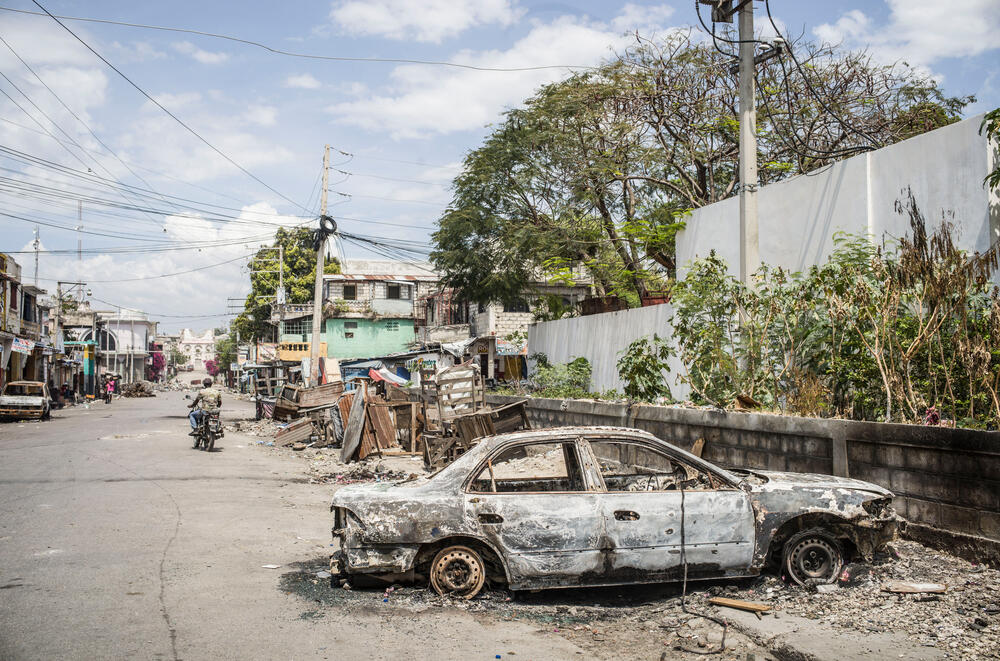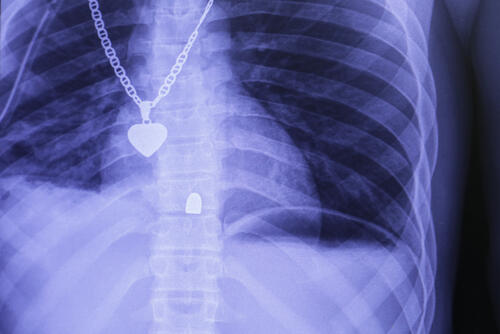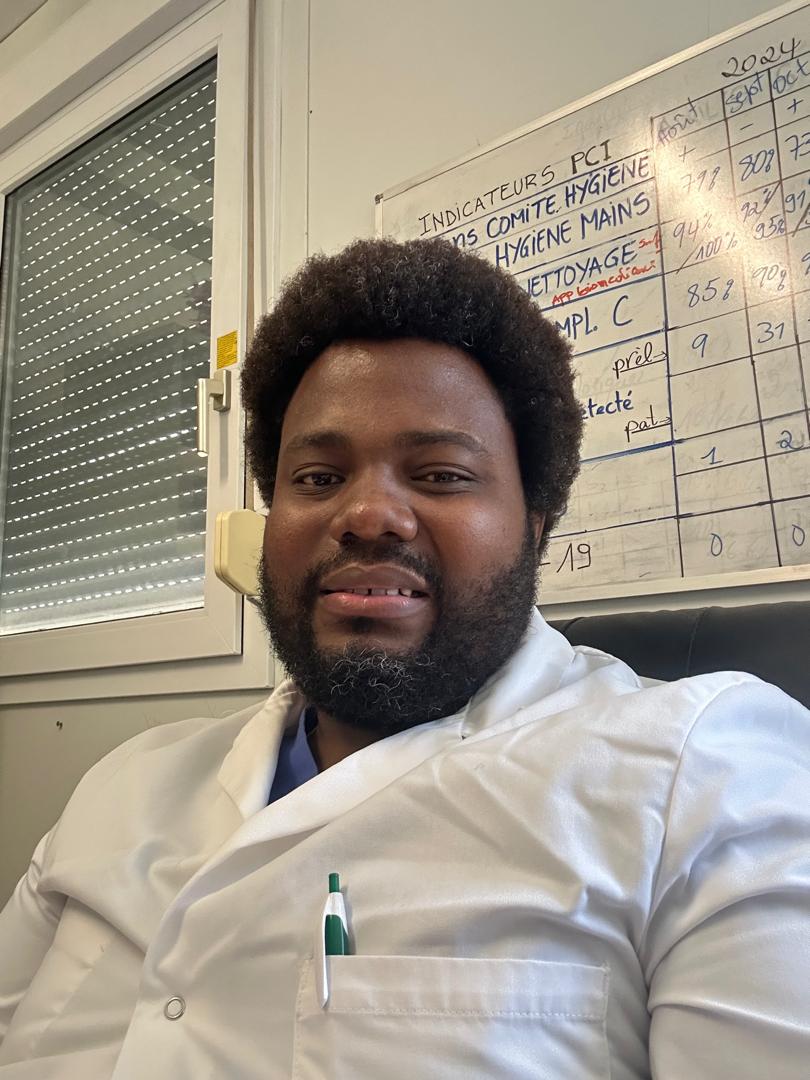Fighting antibiotic resistance to save lives in Haiti
Anaesthetist Sophie Pooley has recently returned from Port-au-Prince, Haiti. She pays tribute to Dr Stéphane Dorismond, the colleague whose dedicated work is protecting his hospital’s most vulnerable patients.
In a city torn apart by violence, saving lives isn’t just about patching wounds or emergency surgery. Antibiotic stewardship is one of the most difficult and important jobs in the hospital, but it doesn’t always make you popular.
"Tabarre Burns and Trauma Hospital is an MSF-run facility in the capital of Haiti, Port-au-Prince.
Port-au-Prince is an immensely difficult place to live and work. It has been in a state of emergency since March, when armed groups took control in some previously government-controlled areas.
Violence surged and the groups cemented their control on the movement of goods (including medical supplies) in and out of the city.
The city has high rates of burn injury, resulting from both deliberate attacks linked to the violence and the absence of safe supply and storage of combustible fuels.
As the only specialist burns centre in the country, the team in Tabarre must prioritise only the most severely burnt patients, alongside running wards for traumatic injuries such as gunshot wounds.
Levels of contamination for these kinds of injuries is high, and for those who survive the initial incident, the risk of a life-threatening infection is very real.
The dilemma
Our skin is usually the first line of defence, protecting our bodies from bacteria and other harmful organisms. But when someone has a severe burn, that protective barrier is damaged and the immune system shuts down, leaving the floodgates open for infection.
The deeper and more extensive the burns are, the higher the risk.
One of the most common and dangerous complications of infection is sepsis, a life-threatening condition where the body starts to damage its own organs and tissues.
However, it’s often difficult to tell whether someone with burns has sepsis or not. The body responds to severe burns with whole-body inflammation, in the same way that it would to a serious systemic bacterial infection.
So, patients with severe burns will also develop signs like the raging fevers, heart rate and blood pressure changes that are usually the criteria doctors use to diagnose sepsis.
People with sepsis need to be treated quickly with broad spectrum antibiotics, but using these medications when they’re not needed brings its own dangers, so the difficult diagnostic distinction is critical.
"At some point all that are left are antibiotics which are normally avoided because of the severity of the side-effects"
Toxic side-effects
When antibiotics are given frequently, patients can develop infections that are resistant to those specific drugs.
And as bacteria become more extensively drug-resistant, the number of options doctors have to treat life-threatening conditions like sepsis starts to drop.
At some point all that are left are antibiotics which are normally avoided because of the severity of the side-effects.
For these third- or fourth-line drugs, the side-effects aren’t things like itching or nausea. Some can cause kidney failure, liver failure or encephalitis (a condition that causes inflammation of the brain), serious health issues in themselves, especially for a critically unwell patient.
Yet when sepsis puts the patient’s life at risk, these drugs may be the only choice. In some cases, doctors may find themselves left with no effective antibiotics at all. The World Health Organization estimates that antimicrobial resistance contributes to almost five million deaths a year.
Dr Dorismond
Although the whole medical team is trained in the essentials of antibiotic stewardship, and MSF has produced specific guidance on antibiotic usage for burns patients in Tabarre, there is one man whose whole role is dedicated to protecting patients by reducing this risk as much as possible.
In the UK, where I’m from, this work would be done by a microbiologist. In Tabarre, it’s done by Stéphane Dorismond, a doctor who has completed MSF’s specialist training in antibiotic stewardship.
Dr Dorismond talks with patients, as well as the doctors, nurses, and surgeons on the burns team to understand the progression of the patient’s wounds and general condition.
His attention to detail draws out the subtle differences in the evolution of clinical signs and test results that can help to indicate whether a severely burnt patient truly has an infection, or whether it is part of their body’s response to the burns.
When their patient could have something as serious as sepsis, it’s natural for doctors to want to do everything they can to treat them, and it’s difficult to resist the impulse to give them strong antibiotics “just in case”.
So, Dr Dorismond’s role as a gate-keeper is a difficult one: to do it well he needs not only specialist knowledge but also strong communication skills, helping the team work with the protocols to get the best outcome for the patient.
A volatile situation
Dr Dorismond’s role would be stressful anywhere with such complex patients, but the volatile security situation in Haiti brings additional challenges.
At one point while I was there, the armed groups’ control of the airport and seaports of Port-au-Prince meant that we started to run out of medical supplies, including a lot of IV antibiotics, despite the best efforts of the logistics and pharmacy teams.
We had to start giving patients with non-resistant infections those second-line drugs we still had stocks of. These are the medications we normally save for the patients who have resistant bacteria, so it was not an ideal situation. However, if we hadn’t already had strong stewardship in place, it could have been much worse.
Dr Dorismond guided the team through new treatment pathways: no patient was left without treatment options, and we were able to avoid the drugs with the most harmful side-effects.
"Only with investment will accurate diagnosis and targeted treatment options be available for all patients, combatting antibiotic resistance and ultimately saving lives"
A worldwide call
At MSF we see the impact of antimicrobial resistance every day, not just in Haiti, but in many of the low-resource settings in which we operate.
Specialist antibiotic stewardship roles like Dr Dorismond’s are vital, but they are just one tool in the work to protect patients as much as possible.
That’s why MSF is also making a broader call: for more investment in laboratory infrastructure, training, and innovations in low-resource settings around the world.
Only with this investment will accurate diagnosis and targeted treatment options be available for all patients, combatting antibiotic resistance and ultimately saving lives."
What is antibiotic resistance?
Antimicrobial resistance (AMR) is one of the leading health threats confronting humanity, with the potential to undermine medications that make up the foundation of modern healthcare, take millions of lives, cause massive economic harm, and exacerbate global inequalities.
In settings affected by armed conflict, natural disasters, epidemics, healthcare exclusion, or low resources, MSF has witnessed the growing threat of AMR and its impact on the effectiveness of patients’ treatments.




